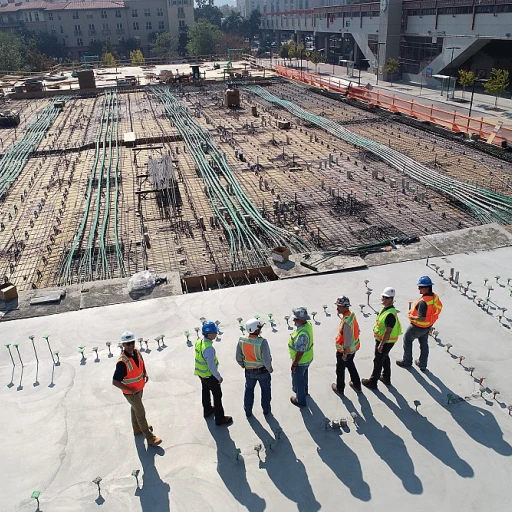
Understanding Employee Retention Challenges
The Key Challenges Impacting Employee Retention
Employee retention is more than just minimizing turnover rates; it encompasses fostering an environment where employees feel valued and motivated. Companies face numerous challenges in retaining their workforce, often stemming from various internal and external factors that affect employee engagement and satisfaction. Employee satisfaction is continuously impacted by a range of dynamics, making retention a complex issue to address. While offering competitive salaries and benefits is one part of the equation, organizations must dive deeper into understanding the underlying causes that might drive employees away.- Management and Leadership Quality: The quality of management and leadership can significantly influence employee morale. Research consistently shows a strong correlation between effective management and high employee retention rates. Poor management can lead to disengagement, further intensifying retention challenges.
- Work-Life Balance: The balance between work and personal life is no longer a mere employee benefit but a fundamental expectation. Companies struggling to offer flexibility, even through advanced labor management software, may find it hard to keep their workforce intact.
- Recognition and Growth Opportunities: Employees seek recognition for their contributions and opportunities to grow within the organization. A lack of career advancement prospects can contribute to dissatisfaction, prompting employees to seek opportunities elsewhere.
The Role of Labor Management Software in Workforce Optimization
Enhancing Workforce Efficiency with Technological Solutions
Modern labor management software plays a crucial role in optimizing a company's workforce. These systems offer an array of features designed to streamline various processes and improve overall efficiency. By employing advanced software, businesses can better manage scheduling, attendance, and compliance, ultimately bolstering workforce productivity. With labor management systems, organizations can effectively address common challenges in time-tracking and attendance management. The real-time tracking capabilities ensure that managers have timely and accurate data to make informed decisions. This allows for a more fluid scheduling process and helps reduce unnecessary labor costs due to inaccurate time attendance records. Additionally, these systems can aid in maintaining compliance with labor laws and standards, a critical aspect for all businesses. By setting standardized labor costs and schedules, companies can mitigate risks associated with non-compliance. This robust management of compliance issues provides peace of mind and lets businesses focus more on growing their strengths. Moreover, the integration of labor management software allows for the centralized collection and analysis of employee performance data. This can help managers identify trends and areas for improvement within the workforce. Systems that track and evaluate employee engagement and warehouse labor productivity can also contribute valuable insights. For further understanding of how employee profiles can impact retention strategies, consider exploring understanding the diverse profiles of workers for better retention. Knowing more about the workforce can significantly aid in tailoring a more effective management system. Labor management software is an invaluable tool in the modern business landscape, allowing detailed tracking of employee performance and helping organizations refine their scheduling and compliance strategies. By leveraging these advanced systems, businesses can enhance their labor productivity and optimize their overall workforce engagement.Boosting Employee Satisfaction through Technology
Leveraging Technology for Employee Satisfaction
In today’s fast-paced business environment, boosting employee satisfaction has become a priority for organizations aiming to maintain a competitive edge. As businesses strive to optimize their operations, leveraging advanced labor management software (LMS) can significantly enhance workforce satisfaction and retention. Integrating modern management software into daily operations provides employees with the tools to better manage their time and tasks. The introduction of time tracking and real-time attendance systems allows employees to have more control over their schedules, enhancing their work-life balance. This flexibility not only improves overall productivity and performance but also increases employee engagement and job satisfaction. Labor management systems come equipped with a myriad of features designed to help organizations streamline processes and comply with labor laws. Automated scheduling ensures compliance with labor standards and reduces labor costs by optimizing shift allocations and workforce management. By minimizing scheduling conflicts and simplifying time attendance tracking, employees experience less stress and perform more efficiently. Adding to the satisfaction factor is the ability of these systems to provide data analytics that inform management decisions on staff allocation and productivity. This transparency in data fosters a culture of trust and accountability, where employees feel valued and understood. Moreover, the incorporation of attendance tracking and performance management systems enables organizations to reward employees effectively for their contributions, aligning with best practices in employee engagement. Recognizing achievements motivates employees to maintain high standards and fosters a culture of appreciation. For insights on how recognizing colleagues can powerfully impact retention, read more about recognition strategies at HCA. Ultimately, boosting employee satisfaction with technology is a multifaceted approach that requires an understanding of both human and technological elements. By strategically employing advanced labor management tools, organizations can foster a supportive work environment that encourages growth, loyalty, and long-term success.Data-Driven Decision Making for Retention Strategies
Leveraging Data for Strategic Retention Decisions
In the realm of employee retention, data has emerged as a powerful tool for making informed and strategic decisions. With advanced labor management software, organizations can harness a wealth of data points to understand and address the complexities surrounding workforce retention. By delving into these insights, companies can take proactive steps to enhance employee engagement and satisfaction. Labor management systems (LMS) come equipped with various features that facilitate data collection and analysis, offering a comprehensive view of employee performance, attendance, time tracking, and scheduling. This information is crucial in identifying patterns and areas of improvement, allowing for more nuanced decision-making. Key aspects influenced by data-driven approaches include:- Performance Assessment: By analyzing productivity data, businesses can pinpoint underperforming areas within their workforce and devise targeted strategies to address them. This ensures that employees receive the support they need to succeed, ultimately boosting retention.
- Attendance and Scheduling Optimization: Data on time attendance and scheduling can help uncover trends in absenteeism, allowing for more effective workforce management. Fine-tuning scheduling ensures labor compliance while accommodating employee preferences, which can reduce burnout and improve job satisfaction.
- Cost Management: With a clear understanding of labor costs through data analysis, organizations can implement measures to curb unnecessary expenses. This includes aligning labor standards with operational demands to optimize resource allocation without overshooting budget constraints.
- Labor Laws and Compliance: Keeping abreast of labor laws and ensuring compliance is paramount for managing a diverse workforce. Data tracking helps organizations stay updated with any legal requirements, minimizing liabilities and fostering a fair working environment.
Integrating Labor Management Software with HR Practices
Integrating Advanced Tools into HR Strategies
Incorporating advanced labor management systems into HR practices offers a powerful way to improve various facets of employee management. These systems facilitate efficient time tracking, scheduling, and overall performance management. By streamlining these processes, businesses can boost productivity while minimizing compliance risks associated with labor laws.
Labor management software plays a critical role in ensuring that the workforce is utilized effectively. Scheduling features within these systems allow for real-time adjustments, optimizing shift timings and thus avoiding potential over- and under-staffing scenarios. This aspect ensures that employee satisfaction levels are elevated as scheduling becomes both fair and flexible.
Monitoring employee engagement is another key feature of these management systems. With accurate attendance tracking and data-driven insights, HR departments can recognize patterns that may indicate dissatisfaction or potential retention issues. These insights facilitate timely interventions, such as mentoring or additional supports, which can significantly enhance workforce morale and retention.
Moreover, labor management systems help organizations maintain compliance with labor standards. The systems provide detailed records necessary for audits, ensuring labor costs and attendance data are accurately tracked and reported. In the realm of warehouse labor or a supply chain setting, these systems promise more precise tracking and management, minimizing downtime and improving overall operational efficiency.
By integrating these powerful tools, organizations are not only streamlining their HR processes but are also positioning themselves as forward-thinking and employee-centered. This approach aligns with enhancing employee satisfaction and retention strategies. Companies aiming to reduce labor costs while simultaneously improving employee performance are increasingly turning to these systems to achieve their goals.












